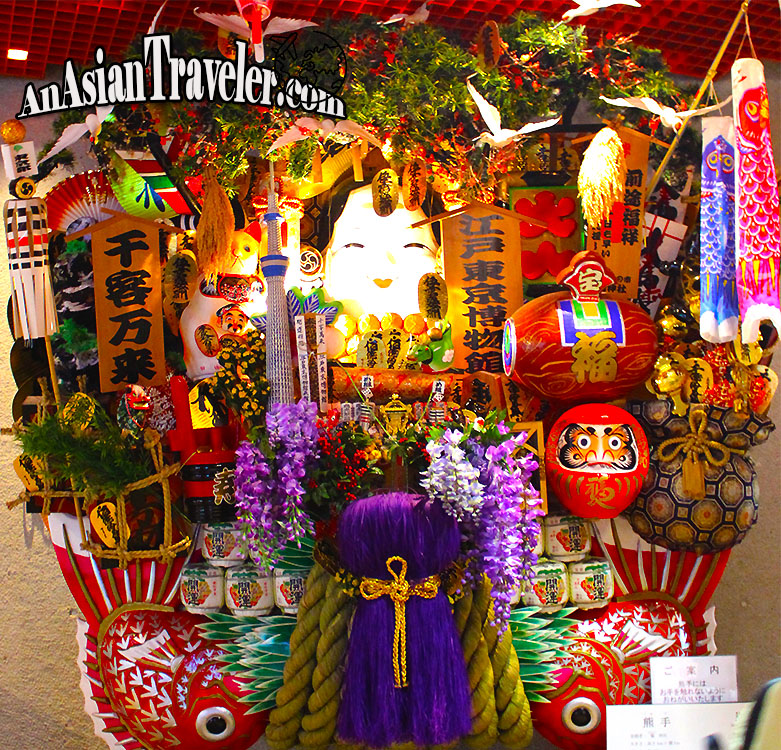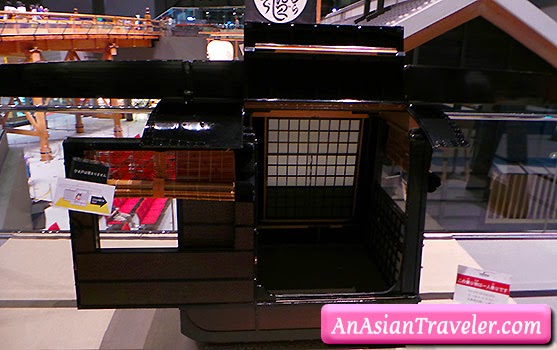A Fun and Engaging Journey Through the 400 Year History of Edo-Tokyo (Throwback)
SHARE THIS ARTICLE: |
| Kumade - a bamboo rake of fortune |
Going in, I caught a glimpse of this colorful and intricate indistinct object positioned near the /entrance/exit of the building. It's known as a Kumade, a bamboo rake of fortune decorated with various auspicious things. It is believed to bring luck to businesses, and are offered to the Shinto altar or displayed at other places in the shops, offices, and homes throughout the year.
The permanent exhibition of Edo-Tokyo museum occupies two floors of the building. It features the life-size replica of the Nihonbashi Bridge leading into the Edo Zone, which includes Edo Castle and the Edo city plan, high-ranking buke residence, and a scale model of townspeople's residential district in the Kan-ei era.
 |
| Nihonbashi bridge |
As for the old Daimyo palanquin, visitors can try to sit inside and have your photo taken. The lord of Tsuyama Domain used this particular palanquin or sedan chair for the daimyo processions. It was carried by two people in the front and two in the back. It is made more for practical use compared to the decorative palanquins for the ladies.
 |
| daimyo palanquin |
 |
| decorative palanquin |
The main feature in the lower floor section is a full-size Nakamura Kabuki Theater positioned in the capacious main hall. And there's also an imaginary scene from the play representative of Kabuki in the Edo period - the Sukeroku Stage.
 |
| Nakamura-za Kabuki Theater |
 |
| Sukeroku Stage |
In the Tokyo zone, you can also see some fascinating miniature models, dioramas, various artifacts, and buildings from varied eras. There are also old bicycles, carriages, cars, and a reconstructed balloon bomb developed by the Japanese army, and more.
 SHARE THIS!
SHARE THIS! 
























0 comments